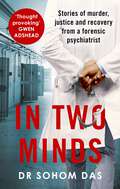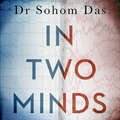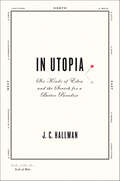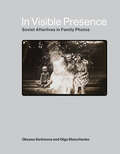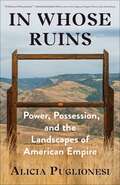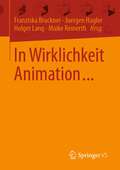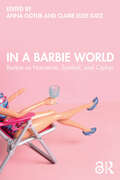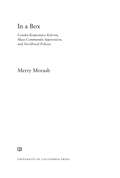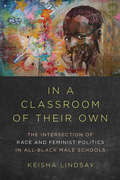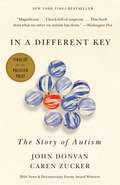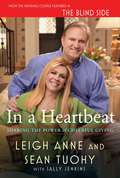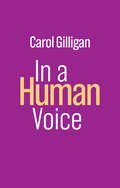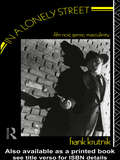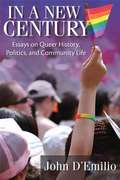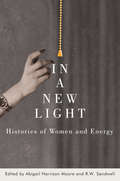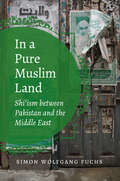- Table View
- List View
In Two Minds: Stories of murder, justice and recovery from a forensic psychiatrist
by Dr Sohom Das'thought provoking'Gwen AdsheadShocking, eye-opening and grimly fascinating, these are the true stories, patients and cases that have characterised a career spent treating mentally disordered offenders.As a forensic psychiatrist, it's Dr Das's job to treat and rehabilitate what the tabloids might call the 'criminally insane', many of whom assault, rob, rape, and even kill. His work takes him to high-security prisons and securely locked hospital wards across the country, as well as inside courtrooms, giving evidence as an expert witness.From the young woman who smothered her two-year-old nephew in a flash of psychosis, to the teenager who set his house on fire with his mother locked inside, Dr Das must delve into the minds of these violent offenders to elicit their symptoms of mental illness, understand their actions and prevent future atrocities.In this honest, revealing and at times humorous memoir, Dr Das shares stories from his fifteen years as a psychiatric doctor working with this dangerous clientele, detailing some of his most extreme, heart-breaking and bizarre cases - and how he's learned to live with his mistakes when the worse happens.Compelling, enlightening and candid, if you enjoyed Unnatural Causes, Dark Side of the Mind or The Prison Doctor, you'll love IN TWO MINDS.
In Two Minds: Stories of murder, justice and recovery from a forensic psychiatrist
by Dr Sohom Das'thought provoking'Gwen AdsheadShocking, eye-opening and grimly fascinating, these are the true stories, patients and cases that have characterised a career spent treating mentally disordered offenders.As a forensic psychiatrist, it's Dr Das's job to treat and rehabilitate what the tabloids might call the 'criminally insane', many of whom assault, rob, rape, and even kill. His work takes him to high-security prisons and securely locked hospital wards across the country, as well as inside courtrooms, giving evidence as an expert witness.From the young woman who smothered her two-year-old nephew in a flash of psychosis, to the teenager who set his house on fire with his mother locked inside, Dr Das must delve into the minds of these violent offenders to elicit their symptoms of mental illness, understand their actions and prevent future atrocities.In this honest, revealing and at times humorous memoir, Dr Das shares stories from his fifteen years as a psychiatric doctor working with this dangerous clientele, detailing some of his most extreme, heart-breaking and bizarre cases - and how he's learned to live with his mistakes when the worse happens.Compelling, enlightening and candid, if you enjoyed Unnatural Causes, Dark Side of the Mind or The Prison Doctor, you'll love IN TWO MINDS.
In Two Minds: Stories of murder, justice and recovery from a forensic psychiatrist
by Dr Sohom DasShocking, eye-opening and grimly fascinating, these are the true stories, patients and cases that have characterised a career spent treating mentally disordered offenders.Listen to the end of the audiobook for an exclusive bonus chapter, written and read by the author.As a forensic psychiatrist, it's Dr Das's job to treat and rehabilitate what the tabloids might call the 'criminally insane', many of whom assault, rob, rape, and even kill. His work takes him to high-security prisons and securely locked hospital wards across the country, as well as inside courtrooms, giving evidence as an expert witness.From the young woman who smothered her two-year-old nephew in a flash of psychosis, to the teenager who set his house on fire with his mother locked inside, Dr Das must delve into the minds of these violent offenders to elicit their symptoms of mental illness, understand their actions and prevent future atrocities.In this honest, revealing and at times humorous memoir, Dr Das shares stories from his fifteen years as a psychiatric doctor working with this dangerous clientele, detailing some of his most extreme, heart-breaking and bizarre cases - and how he's learned to live with his mistakes when the worse happens.Compelling, enlightening and candid, if you enjoyed Unnatural Causes, Dark Side of the Mind or The Prison Doctor, you'll love IN TWO MINDS.
In Utopia: Six Kinds of Eden and the Search for a Better Paradise
by J. C. HallmanIn 2005, J.C. Hallman came across a scientific paper about "Pleistocene Rewilding," a peculiar idea from conservation biology that suggested repopulating bereft ecosystems with endangered "megafauna." The plan sounded utterly utopian, but Hallman liked the idea as much as the scientists did—perhaps because he had grown up on a street called Utopia Road in a master-planned community in Southern California. Pleistocene Rewilding rekindled in him a longstanding fascination with utopian ideas, and he went on to spend three weeks at the world's oldest "intentional community," sail on the first ship where it's possible to own "real estate," train at the world's largest civilian combat-school, and tour a $30 billion megacity built from scratch on an artificial island off the coast of Korea. In Utopia explores the history of utopian literature and thought in the narrative context of the real-life fruits of that history.
In Visible Archives: Queer and Feminist Visual Culture in the 1980s
by Margaret GalvanAnalyzing how 1980s visual culture provided a vital space for women artists to theorize and visualize their own bodies and sexualities In 1982, the protests of antiporn feminists sparked the censorship of the Diary of a Conference on Sexuality, a radical and sexually evocative image-text volume whose silencing became a symbol for the irresolvable feminist sex wars. In Visible Archives documents the community networks that produced this resonant artifact and others, analyzing how visual culture provided a vital space for women artists to theorize and visualize their own bodies and sexualities. Margaret Galvan explores a number of feminist and cultural touchstones—the feminist sex wars, the HIV/AIDS crisis, the women in print movement, and countercultural grassroots periodical networks—and examines how visual culture interacts with these pivotal moments. She goes deep into the records to bring together a decade&’s worth of research in grassroots and university archives that include comics, collages, photographs, drawings, and other image-text media produced by women, including Hannah Alderfer, Beth Jaker, Marybeth Nelson, Roberta Gregory, Lee Marrs, Alison Bechdel, Gloria Anzaldúa, and Nan Goldin. The art highlighted in In Visible Archives demonstrates how women represented their bodies and sexualities on their own terms and created visibility for new, diverse identities, thus serving as blueprints for future activism and advocacy—work that is urgent now more than ever as LGBTQ+ and women&’s rights face challenges and restrictions across the nation.
In Visible Presence: Soviet Afterlives in Family Photos
by Oksana Sarkisova Olga ShevchenkoAn absorbing exploration of Soviet-era family photographs that demonstrates the singular power of the photographic image to command attention, resist closure, and complicate the meaning of the past.A faded image of a family gathered at a festively served dinner table, raising their glasses in unison. A group of small children, sitting in orderly rows, with stuffed toys at their feet and a portrait of Lenin looming over their heads. A pensive older woman against a snowy landscape, her gaze directed lovingly at a tombstone. These are a few of the evocative images in In Visible Presence by Oksana Sarkisova and Olga Shevchenko, an exquisitely researched book that brings together photographs from Soviet-era family photo archives and investigates their afterlives in Russia.In Visible Presence explores the photographic images&’ singular power to capture a fleeting moment by approaching them as points of contestation and possibility. Drawing on over a decade of fieldwork and interviews, as well as internet ethnography, media analysis, and case studies, In Visible Presence offers a rich account of the role of family photography in creating communities of affect, enabling nostalgic longings, and processing memories of suffering, violence, and hardship. Together these photos evoke youthful aspirations, dashed hopes, and moral compromises, as well as the long legacy of silence that was passed down from grandparents to parents to children.With more than 250 black and white photos, In Visible Presence is an astonishing journey into domestic photography, family memory, and the ongoing debate over the meaning of the Soviet past that is as timely and powerful today as it has ever been.
In Vitro Fertilisation in the 1990s: Towards a Medical, Social and Ethical Evaluation (Routledge Revivals)
by Elisabeth Hildt Dietmar MiethPublished in 1998, this book is a collected volume of papers from the first conference of the European Network for Biomedical ethics. The main subject of this conference is the ethical assessment of IVF in view of its concrete application as an infertility treatment and the consideration of possible alternatives for use. Twenty years after the introduction and the establishment of this therapy a more concrete evaluation of its medical indications, social conditions and consequences, the psychological consequences for the women involved and the parent-child relationship becomes possible. The legal and ethical evaluation of the reproduction technology as regards for example the legal and moral status of supernumery embyos in cryo-conservation has also to be considered in a European perspective. The ethical evaluation concentrates today on the new evolution that IVF technology takes in relation to the extension of diagnostics possibilities due to genetic research. Little work has been done on the connection between IVF and genetic diagnostics and therapy, so the medical and ethical evaluation of the connecting lines are also included in the book.
In Whose Interest?: The Privatisation of Child Protection and Social Work
by Ray JonesAs the government continues to open up child protection and social work in England to a commercial market place, what is the social cost of privatising public services? And what effect has the failure of previous privatisations had on their provision? This book, by best-selling author and expert social worker Ray Jones, is the first to tell the story of how crucial social work services, including those for families and children, are now being out-sourced to private companies. Detailing how the failures of previous privatisations have led to the deterioration of services for the public, it shows how this trend threatens the safety and wellbeing of vulnerable children and disabled adults.
In Whose Ruins: Power, Possession, and the Landscapes of American Empire
by Alicia PuglionesiIn this &“first-rate work of historical research and storytelling&” (Kirkus Reviews, starred review), four sites of American history are revealed as places where truth was written over by oppressive fiction—with profound repercussions for politics past and present.Popular narratives of American history conceal as much as they reveal, presenting a national identity based on harvesting treasures that lay in wait for European colonization. In Whose Ruins tells another story: winding through the US landscape, from Native American earthworks in West Virginia to the Manhattan Project in New Mexico, this history is a tour of sites that were mined for an empire&’s power. Showing the hidden costs of ruthless economic growth—particularly to Indigenous people—this book illuminates the myth-making intimately tied to place. From the ground up, the project of settlement, expansion, and extraction became entwined with the spiritual values of those who hoped to gain from it. Every nation tells some stories and suppresses others, and In Whose Ruins illustrates the way American myths have overwritten Indigenous histories, binding us into an unsustainable future. Historian Alicia Puglionesi? &“makes a perfect guide through the strange myths, characters, and environments that best reflect the insidious exploitation inseparable from American dominion&” (Chicago Review of Books). She illuminates the story of the Grave Creek Stone, &“discovered&” in an ancient Indigenous burial mound; oil wells drilled in the corner of western Pennsylvania once known as Petrolia; ancient petroglyphs that once adorned rock faces on the Susquehanna River, dynamited into pieces to make way for a hydroelectric dam; and the effects of the US nuclear program in the Southwest, which contaminated vast regions in the name of eternal wealth and security through atomic power, a promise that rang hollow for the surrounding Native, Hispanic, and white communities. It also inspired nationwide resistance, uniting diverse groups behind a different vision of the future—one not driven by greed and haunted by ruin. This deeply researched work traces the roots of American fantasies and fears in a national tradition of selective forgetting. Connecting the power of myths with the extraction of power from the land itself reveals the truths that have been left out and is &“a stimulating look at the erasure and endurance of Native American culture&” (Publishers Weekly).
In Wirklichkeit Animation...: Beiträge zur deutschsprachigen Animationsforschung
by Franziska Bruckner Maike Sarah Reinerth Holger Lang Juergen HaglerDieser Band stellt das Spannungsfeld von Wirklichkeit und Animation in den Mittelpunkt und lotet aus, inwieweit dieses Verhältnis interdisziplinär begriffen und (medien)theoretisch erfasst werden kann. Wirklichkeit und Animation erscheinen im ersten Moment als Gegensatz: auf der einen Seite das Reale, Nicht-Mediale, Tatsächliche und Ursprüngliche und auf der anderen Seite das Fiktive, In-Bewegung-Gesetzte, Verwandelte und künstlich Gemachte. Doch gerade aus diesem vermeintlichen Kontrast ergibt sich ein produktives Spannungsfeld: So setzen auch ‚realistische‘ und dokumentarische Formen vielfach Animationen ein. Realfotografische und animierte Elemente verbinden sich in Online-Umgebungen und Augmented-Reality-Formaten zu Hybriden. Hinsichtlich virtueller Wirklichkeiten stellt sich außerdem die Frage, wie hyperrealistische Animationen und Effekte in der Postproduktion zu bewerten sind und ob die ausgestellte Künstlichkeit sichtbarer Animation nicht authentischer wirkt. Parallel dazu entwickeln sich die Animation Studies zu einem wachsenden interdisziplinären Forschungsfeld, dessen Stellenwert sich nicht nur im künstlerischen und medien-wissenschaftlichen Bereich, sondern auch in der industriellen Anwendung zeigt.
In a Barbie World: Barbie as Narrative, Symbol, and Cipher
by Anna GotlibIn a Barbie World: Barbie as Narrative, Symbol, and Cipher brings together a group of global scholars representing different disciplines and identities to examine the myriad themes that emerge from the Greta Gerwig film, Barbie.In 2023, Barbie unexpectedly became the highest grossing film of the year and surprised audiences with its perceptive exploration of feminism and feminist philosophies. Taking an inclusive, interdisciplinary approach, this collection is the first book to undertake a philosophical and academic consideration of Barbie. This collection of essays approaches the film from different disciplinary perspectives, considering it simultaneously as a cultural phenomenon and as an academic text. Chapters cover a range of topics, including patriarchy, consumerism, capitalism, colonialism, sexual identity, race, recognition, relationships, mothers and daughters, queerness, girl power, feminism, and, of course, its theatre rival, Oppenheimer.In a Barbie World: Barbie as Narrative, Symbol, and Cipher offers an accessible yet scholarly contribution to the fields of gender studies, political theory, philosophy, film studies, bioethics, and education, among others. It will be of value to students of these subjects at both undergraduate and graduate level, as well as to broader audiences who are interested in Barbie and its themes.The Open Access version of this book, available at http://www.taylorfrancis.com, has been made available under a Creative Commons Attribution-Non Commercial-No Derivatives (CC BY-NC-ND) 4.0 license.
In a Box: Gender-Responsive Reform, Mass Community Supervision, and Neoliberal Policies
by Merry MorashIn a Box draws on the experiences of more than one hundred Michigan women on probation or parole to analyze how court, state, and federal policies hamper the state’s efforts at gender-responsive reforms in community supervision. Closely narrating the stories of six of these women, Merry Morash shows how countervailing influences keep reform-oriented probation and parole agents and the women they supervise "in a box." Supervisory approaches that attempt to move away from punitive frameworks are limited or blocked by neoliberal social policies. Inspired by the interviewees’ reflections on their own experiences, the book offers recommendations for truly effective reforms within and outside the justice system.
In a Classroom of Their Own: The Intersection of Race and Feminist Politics in All-Black Male Schools (Dissident Feminisms)
by Keisha LindsayMany advocates of all-black male schools (ABMSs) argue that these institutions counter black boys’ racist emasculation in white, “overly” female classrooms. This argument challenges racism and perpetuates antifeminism. Keisha Lindsay explains the complex politics of ABMSs by situating these schools within broader efforts at neoliberal education reform and within specific conversations about both "endangered” black males and a “boy crisis” in education. Lindsay also demonstrates that intersectionality, long considered feminist, is in fact a politically fluid framework. As such, it represents a potent tool for advancing many political agendas, including those of ABMSs supporters who champion antiracist education for black boys while obscuring black girls’ own race and gender-based oppression in school. Finally, Lindsay theorizes a particular means by which black men and other groups can form antiracist and feminist coalitions even when they make claims about their experiences that threaten bridge building. The way forward, Lindsay shows, allows disadvantaged groups to navigate the racial and gendered politics that divide them in pursuit of productive—and progressive—solutions. Far-thinking and boldly argued, In a Classroom of Their Own explores the dilemmas faced by professionals and parents in search of equitable schooling for all students—black boys and otherwise.
In a Different Key
by Caren Zucker John DonvanNearly seventy-five years ago, Donald Triplett of Forest, Mississippi became the first child diagnosed with autism. Beginning with his family's odyssey, In a Different Key tells the extraordinary story of this often misunderstood condition, and of the civil rights battles waged by the families of those who have it. Unfolding over decades, it is a beautifully rendered history of ordinary people determined to secure a place in the world for those with autism--by liberating children from dank institutions, campaigning for their right to go to school, challenging expert opinion on what it means to have autism, and persuading society to accept those who are different. It is the story of women like Ruth Sullivan, who rebelled against a medical establishment that blamed cold and rejecting "refrigerator mothers" for causing autism; and of fathers who pushed scientists to dig harder for treatments. Many others played starring roles too: doctors like Leo Kanner, who pioneered our understanding of autism; lawyers like Tom Gilhool, who took the families' battle for education to the courtroom; scientists who sparred over how to treat autism; and those with autism, like Temple Grandin, Alex Plank, and Ari Ne'eman, who explained their inner worlds and championed the philosophy of neurodiversity. This is also a story of fierce controversies--from the question of whether there is truly an autism "epidemic," and whether vaccines played a part in it; to scandals involving "facilitated communication," one of many treatments that have proved to be blind alleys; to stark disagreements about whether scientists should pursue a cure for autism. There are dark turns too: we learn about experimenters feeding LSD to children with autism, or shocking them with electricity to change their behavior; and the authors reveal compelling evidence that Hans Asperger, discoverer of the syndrome named after him, participated in the Nazi program that consigned disabled children to death.By turns intimate and panoramic, In a Different Key takes us on a journey from an era when families were shamed and children were condemned to institutions to one in which a cadre of people with autism push not simply for inclusion, but for a new understanding of autism: as difference rather than disability.
In a Different Key: The Story of Autism
by Caren Zucker John DonvanAn extraordinary narrative history of autism: the riveting story of parents fighting for their children 's civil rights; of doctors struggling to define autism; of ingenuity, self-advocacy, and profound social changeNearly seventy-five years ago, Donald Triplett of Forest, Mississippi, became the first child diagnosed with autism. Beginning with his family's odyssey, In a Different Key tells the extraordinary story of this often misunderstood condition, and of the civil rights battles waged by the families of those who have it. Unfolding over decades, it is a beautifully rendered history of ordinary people determined to secure a place in the world for those with autism--by liberating children from dank institutions, campaigning for their right to go to school, challenging expert opinion on what it means to have autism, and persuading society to accept those who are different. It is the story of women like Ruth Sullivan, who rebelled against a medical establishment that blamed cold and rejecting "refrigerator mothers" for causing autism; and of fathers who pushed scientists to dig harder for treatments. Many others played starring roles too: doctors like Leo Kanner, who pioneered our understanding of autism; lawyers like Tom Gilhool, who took the families' battle for education to the courtroom; scientists who sparred over how to treat autism; and those with autism, like Temple Grandin, Alex Plank, and Ari Ne'eman, who explained their inner worlds and championed the philosophy of neurodiversity. This is also a story of fierce controversies--from the question of whether there is truly an autism "epidemic," and whether vaccines played a part in it; to scandals involving "facilitated communication," one of many treatments that have proved to be blind alleys; to stark disagreements about whether scientists should pursue a cure for autism. There are dark turns too: we learn about experimenters feeding LSD to children with autism, or shocking them with electricity to change their behavior; and the authors reveal compelling evidence that Hans Asperger, discoverer of the syndrome named after him, participated in the Nazi program that consigned disabled children to death.By turns intimate and panoramic, In a Different Key takes us on a journey from an era when families were shamed and children were condemned to institutions to one in which a cadre of people with autism push not simply for inclusion, but for a new understanding of autism: as difference rather than disability.From the Hardcover edition.
In a Different Key: The Story of Autism
by Caren Zucker John DonvanAn extraordinary narrative history of autism: the riveting story of parents fighting for their children ’s civil rights; of doctors struggling to define autism; of ingenuity, self-advocacy, and profound social changeNearly seventy-five years ago, Donald Triplett of Forest, Mississippi, became the first child diagnosed with autism. Beginning with his family’s odyssey, In a Different Key tells the extraordinary story of this often misunderstood condition, and of the civil rights battles waged by the families of those who have it. Unfolding over decades, it is a beautifully rendered history of ordinary people determined to secure a place in the world for those with autism—by liberating children from dank institutions, campaigning for their right to go to school, challenging expert opinion on what it means to have autism, and persuading society to accept those who are different. It is the story of women like Ruth Sullivan, who rebelled against a medical establishment that blamed cold and rejecting “refrigerator mothers” for causing autism; and of fathers who pushed scientists to dig harder for treatments. Many others played starring roles too: doctors like Leo Kanner, who pioneered our understanding of autism; lawyers like Tom Gilhool, who took the families’ battle for education to the courtroom; scientists who sparred over how to treat autism; and those with autism, like Temple Grandin, Alex Plank, and Ari Ne’eman, who explained their inner worlds and championed the philosophy of neurodiversity. This is also a story of fierce controversies—from the question of whether there is truly an autism “epidemic,” and whether vaccines played a part in it; to scandals involving “facilitated communication,” one of many treatments that have proved to be blind alleys; to stark disagreements about whether scientists should pursue a cure for autism. There are dark turns too: we learn about experimenters feeding LSD to children with autism, or shocking them with electricity to change their behavior; and the authors reveal compelling evidence that Hans Asperger, discoverer of the syndrome named after him, participated in the Nazi program that consigned disabled children to death.By turns intimate and panoramic, In a Different Key takes us on a journey from an era when families were shamed and children were condemned to institutions to one in which a cadre of people with autism push not simply for inclusion, but for a new understanding of autism: as difference rather than disability.— Washington Post, Notable Non-fiction Books in 2016— WBUR, Best Books of 2016— Wall Street Journal, Best Books of the Year
In a Different Key: The Story of Autism
by Caren Zucker John DonvanAn extraordinary narrative history of autism: the riveting story of parents fighting for their children ’s civil rights; of doctors struggling to define autism; of ingenuity, self-advocacy, and profound social changeNearly seventy-five years ago, Donald Triplett of Forest, Mississippi, became the first child diagnosed with autism. Beginning with his family’s odyssey, In a Different Key tells the extraordinary story of this often misunderstood condition, and of the civil rights battles waged by the families of those who have it. Unfolding over decades, it is a beautifully rendered history of ordinary people determined to secure a place in the world for those with autism—by liberating children from dank institutions, campaigning for their right to go to school, challenging expert opinion on what it means to have autism, and persuading society to accept those who are different. It is the story of women like Ruth Sullivan, who rebelled against a medical establishment that blamed cold and rejecting “refrigerator mothers” for causing autism; and of fathers who pushed scientists to dig harder for treatments. Many others played starring roles too: doctors like Leo Kanner, who pioneered our understanding of autism; lawyers like Tom Gilhool, who took the families’ battle for education to the courtroom; scientists who sparred over how to treat autism; and those with autism, like Temple Grandin, Alex Plank, and Ari Ne’eman, who explained their inner worlds and championed the philosophy of neurodiversity. This is also a story of fierce controversies—from the question of whether there is truly an autism “epidemic,” and whether vaccines played a part in it; to scandals involving “facilitated communication,” one of many treatments that have proved to be blind alleys; to stark disagreements about whether scientists should pursue a cure for autism. There are dark turns too: we learn about experimenters feeding LSD to children with autism, or shocking them with electricity to change their behavior; and the authors reveal compelling evidence that Hans Asperger, discoverer of the syndrome named after him, participated in the Nazi program that consigned disabled children to death.By turns intimate and panoramic, In a Different Key takes us on a journey from an era when families were shamed and children were condemned to institutions to one in which a cadre of people with autism push not simply for inclusion, but for a new understanding of autism: as difference rather than disability.
In a Different Key: The Story of Autism
by Caren Zucker John DonvanAn extraordinary narrative history of autism: the riveting story of parents fighting for their children ’s civil rights; of doctors struggling to define autism; of ingenuity, self-advocacy, and profound social changeNearly seventy-five years ago, Donald Triplett of Forest, Mississippi, became the first child diagnosed with autism. Beginning with his family’s odyssey, In a Different Key tells the extraordinary story of this often misunderstood condition, and of the civil rights battles waged by the families of those who have it. Unfolding over decades, it is a beautifully rendered history of ordinary people determined to secure a place in the world for those with autism—by liberating children from dank institutions, campaigning for their right to go to school, challenging expert opinion on what it means to have autism, and persuading society to accept those who are different. It is the story of women like Ruth Sullivan, who rebelled against a medical establishment that blamed cold and rejecting “refrigerator mothers” for causing autism; and of fathers who pushed scientists to dig harder for treatments. Many others played starring roles too: doctors like Leo Kanner, who pioneered our understanding of autism; lawyers like Tom Gilhool, who took the families’ battle for education to the courtroom; scientists who sparred over how to treat autism; and those with autism, like Temple Grandin, Alex Plank, and Ari Ne’eman, who explained their inner worlds and championed the philosophy of neurodiversity. This is also a story of fierce controversies—from the question of whether there is truly an autism “epidemic,” and whether vaccines played a part in it; to scandals involving “facilitated communication,” one of many treatments that have proved to be blind alleys; to stark disagreements about whether scientists should pursue a cure for autism. There are dark turns too: we learn about experimenters feeding LSD to children with autism, or shocking them with electricity to change their behavior; and the authors reveal compelling evidence that Hans Asperger, discoverer of the syndrome named after him, participated in the Nazi program that consigned disabled children to death.By turns intimate and panoramic, In a Different Key takes us on a journey from an era when families were shamed and children were condemned to institutions to one in which a cadre of people with autism push not simply for inclusion, but for a new understanding of autism: as difference rather than disability.
In a Heartbeat: Sharing the Power of Cheerful Giving
by Sally Jenkins Leigh Anne Tuohy Sean TuohyFor the first time, the remarkable couple depicted in The Blind Side tells their own deeply inspiring story--First came the bestselling book, then the Oscar-nominated movie--the story of Michael Oher and the family who adopted him has become one of the most talked-about true stories of our time. But until now, Leigh Anne and Sean Tuohy have never told this astonishing tale in their own way and with their own words. For Leigh Anne and Sean, it all begins with family. Leigh Anne, the daughter of a tough-as-nails U. S. Marshal, decided early on that her mission was to raise children who would become "cheerful givers. " Sean, who grew up poor, believed that one day he could provide a home that would be "a place of miracles. " Together, they raised two remarkable children--Collins and Sean Jr. -- who shared their deep Christian faith and their commitment to making a difference. And then one day Leigh Anne met a homeless African-American boy named Michael and decided that her family could be his. She and her husband taught Michael what this book teaches all of us: Everyone has a blind side, but a loving heart always sees a path toward true charity. Michael Oher's improbable transformation could never have happened if Leigh Anne and Sean Tuohy had not opened their hearts to him. In this compelling, funny, and profoundly inspiring book, the Tuohys take us on an extraordinary journey of faith and love--and teach us unforgettable lessons about the power of giving.
In a Human Voice
by Carol GilliganCarol Gilligan’s landmark book In a Different Voice – the “little book that started a revolution” – brought women’s voices to the fore in work on the self and moral development, enabling women to be heard in their own right, and with their own integrity, for the first time. Forty years later, Gilligan returns to the subject matter of her classic book, re-examining its central arguments and concerns from the vantage point of the present. Thanks to the work that she and others have done in recent decades, it is now possible to clarify and articulate what couldn’t quite be seen or said at the time of the original publication: that the “different voice” (of care ethics), although initially heard as a “feminine” voice, is in fact a human voice; that the voice it differs from is a patriarchal voice (bound to gender binaries and hierarchies); and that where patriarchy is in force or enforced, the human voice is a voice of resistance, and care ethics is an ethics of liberation. While gender is central to the story Gilligan tells, this is not a story about gender: it is a human story. With this clarification, it becomes evident why In a Different Voice continues to resonate strongly with people’s experience and, perhaps more crucially, why the different voice is a voice for the 21st century.
In a Lonely Street: Film Noir, Genre, Masculinity
by Frank KrutnikTaking issue with many orthodox views of Film Noir, Frank Krutnik argues for a reorientation of this compulsively engaging area of Hollywood cultural production. Krutnik recasts the films within a generic framework and draws on recent historical and theoretical research to examine both the diversity of film noir and its significance within American popular culture of the 1940s. He considers classical Hollywood cinema, debates on genre, and the history of the emergence of character in film noir, focusing on the hard-boiled' crime fiction of Dashiell Hammett, Raymond Chandler and James M. Cain as well as the popularisationof Freudian psychoanalysis; and the social and cultural upheavals of the 1940s. The core of this book however concerns the complex representationof masculinity in the noir tough' thriller, and where and how gender interlocks with questions of genre. Analysing in detail major thrillers like The Maltese Falcon, Double Indemnity, Out of the Past and The Killers , alongside lesser known but nonetheless crucial films as Stranger on the Third Floor, Pitfall and Dead Reckoning Krutnik has produced a provocative and highly readable study of one of Hollywood most perennially fascinating groups of films.
In a New Century: Essays on Queer History, Politics, and Community Life
by John D'EmilioFor gay, lesbian, bisexual, and transgender people in the United States, the twenty-first century has brought dramatic changes: the end of sodomy laws, the elimination of "Don't Ask, Don't Tell," a move toward recognition of same-sex marriage, Gay-Straight Alliances in thousands of high schools, and an explosion of visibility in the media and popular culture. All of this would have been unimaginable to those living just a few decades ago. Yet, at the same time, the American political system has grown ever more conservative, and increasing economic inequality has been a defining feature of the new century. <P> A pioneering scholar of gay history, John D'Emilio reflects in this wide-ranging collection of essays upon the social, cultural, and political changes provoked by LGBT activism. He offers provocative questions and historical analyses: What can we learn from a life-long activist like Bayard Rustin, who questioned the wisdom of "identity politics"? Was Richard Nixon a "gay liberationist"? How can knowing local stories-like those of Chicago in the 1950s, 1960s, and 1970s-help build stronger communities and enrich traditions of activism? Might the focus on achieving actually be evidence of growing conservatism in LGBT communities? <P> "In a New Century" provides a dynamic, thoughtful, and important resource for identifying changes that have occurred in the United States since 1960, taking stock of the work that still needs to be done, and issuing an urgent call to action for getting there.
In a New Light: Histories of Women and Energy
by Abigail Harrison Moore and R.W. SandwellIn the early 1970s, a German study estimated that women expended as many calories cleaning their coal-mining husbands' work clothes as their husbands did working below ground, arguably making the home as much a site of industrialized work as factories and mines. But while energy studies are beginning to acknowledge the importance of social and historical contexts and to produce more inclusive histories of the unprecedented energy transitions that powered industrialization, women have remained notably absent from these accounts.In a New Light explores the vital place of women in the shift to fossil fuels that spurred the Industrial Revolution, illuminating the variety of ways in which gender and energy intersected in women's lives in nineteenth- and twentieth-century Europe and North America. From their labour in the home, where they managed the adoption of new energy sources, to their work as educators in electrical housecraft and their protests against the effects of industrialization, women took on active roles to influence energy decisions.Together these essays deepen our understanding of the significance of gender in the history of energy, and of energy transitions in the history of women and gender. By foregrounding women's energetic labours and concerns, the authors shed new light on energy use in the past and provide important insights as societies move towards a carbon-neutral future.
In a Pure Muslim Land: Shi'ism between Pakistan and the Middle East (Islamic Civilization and Muslim Networks)
by Simon Wolfgang FuchsCentering Pakistan in a story of transnational Islam stretching from South Asia to the Middle East, Simon Wolfgang Fuchs offers the first in-depth ethnographic history of the intellectual production of Shi'is and their religious competitors in this "Land of the Pure." The notion of Pakistan as the pinnacle of modern global Muslim aspiration forms a crucial component of this story. It has empowered Shi'is, who form about twenty percent of the country's population, to advance alternative conceptions of their religious hierarchy while claiming the support of towering grand ayatollahs in Iran and Iraq. Fuchs shows how popular Pakistani preachers and scholars have boldly tapped into the esoteric potential of Shi'ism, occupying a creative and at times disruptive role as brokers, translators, and self-confident pioneers of contemporary Islamic thought. They have indigenized the Iranian Revolution and formulated their own ideas for fulfilling the original promise of Pakistan. Challenging typical views of Pakistan as a mere Shi'i backwater, Fuchs argues that its complex religious landscape represents how a local, South Asian Islam may open up space for new intellectual contributions to global Islam. Yet religious ideology has also turned Pakistan into a deadly battlefield: sectarian groups since the 1980s have been bent on excluding Shi'is as harmful to their own vision of an exemplary Islamic state.
